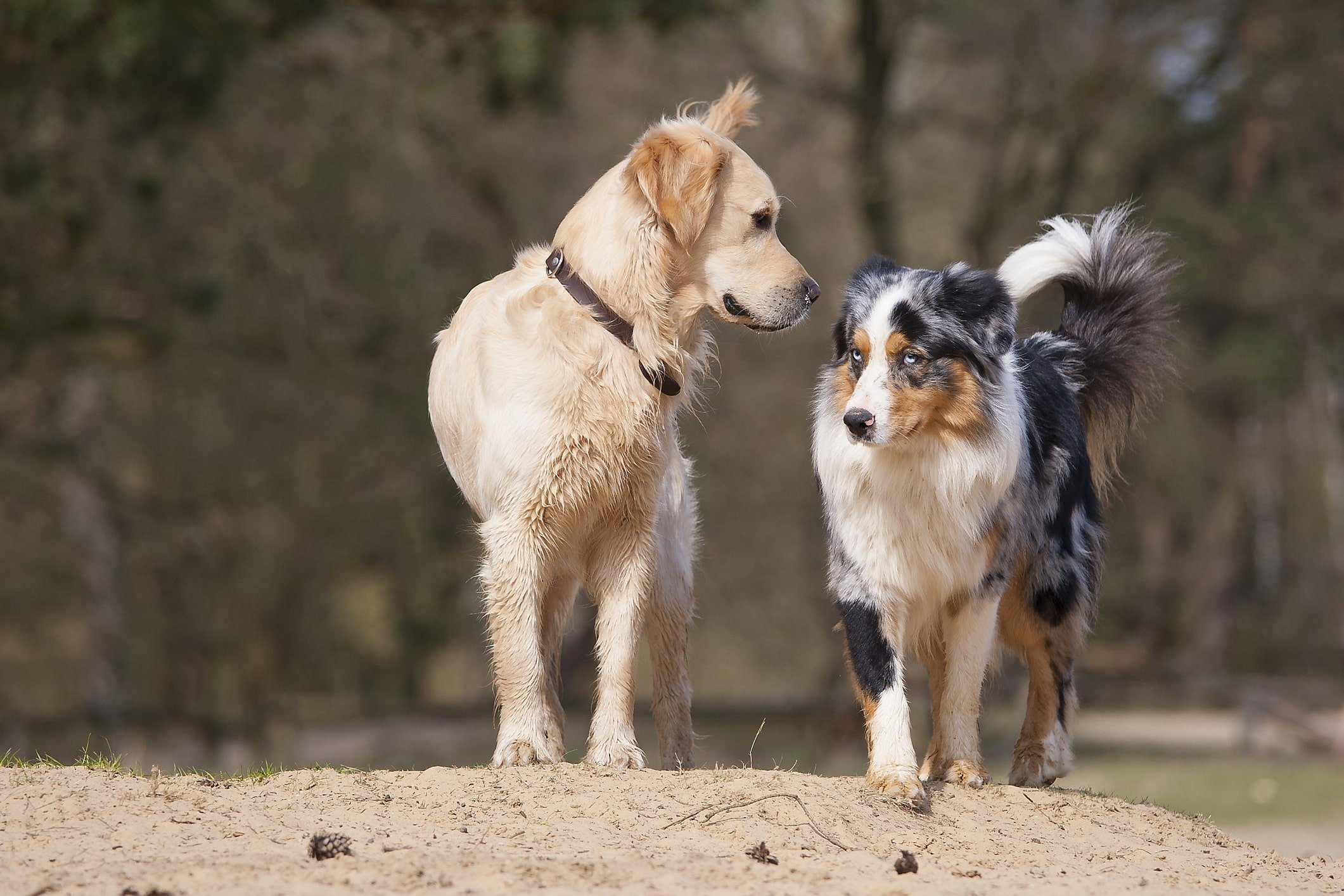WHY DO DOGS WAG THEIR TAILS AND WHAT ARE THE 5 DIFFERENT TYPES OF TAIL WAG IN TERMS OF CANINE BEHAVIOUR?
Dogs wag their tails as a form of communication. It is one of the many ways they express their emotions and convey messages to other dogs and humans.
When a dog wags its tail, it can indicate a range of emotions, such as happiness, excitement, or anticipation. The speed and direction of the tail wag can also convey different messages. For example, a quick and wide tail wag ‘usually’ indicates a dog's excitement and happiness, while a slow and low tail wag can indicate caution or uncertainty.
It's important to note, however, that tail wagging should ‘not’ be interpreted as a universal sign of friendliness OR an invitation for interaction. Tail wagging should always be considered in the context of a dog's overall body language and behavior, as well as the situation and environment they are in and often the state of being that the owner/handler is in.
Here are the different ‘Types’ of dog tail wagging and what they may indicate in terms of canine behavior:
High tail wag: A high tail wag, where the tail is held upright and may even be quivering, often indicates excitement and happiness. Dogs may display this type of tail wag when greeting their owners, meeting new people or dogs, or when they're about to receive a treat or go for a walk.
Low tail wag: A low tail wag, where the tail is held low and may even be tucked between the dog's legs, can indicate fear or submission. Dogs may display this type of tail wag when they encounter something they perceive as a threat or when they're feeling anxious or uncomfortable.
Slow tail wag: A slow tail wag, where the tail is moving back and forth in a relaxed and steady manner, can indicate that the dog is feeling calm and content. Dogs may display this type of tail wag when they're relaxing with their owners or when they're in a comfortable environment.
Quick tail wag: A quick tail wag, where the tail is moving rapidly from side to side, can indicate excitement, anticipation, or even agitation. Dogs may display this type of tail wag when they're playing, chasing a toy, or engaging in other types of high-energy activities.
Tail held to one side: A tail held to one side, where the tail is not wagging but is instead held rigidly to one side of the body, can indicate that the dog is on high alert and may be preparing to react to a perceived threat. Dogs may display this type of tail position when they're in a new or unfamiliar environment, or when they sense something they perceive as a potential danger.
It's important to note that while tail wagging can be a useful indicator of a dog's emotional state, it should always be considered in conjunction with other forms of body language, such as ear position, facial expressions, and overall posture. Additionally, every dog is an individual, and their tail wagging behavior may vary based on their breed, personality, and life experiences. Some dogs could have an unusual tail wag due to a previous injury and it may have nothing to do with the dog’s actual ‘state of being’ at the time you and or you and your dog encounter them. Be observant.


